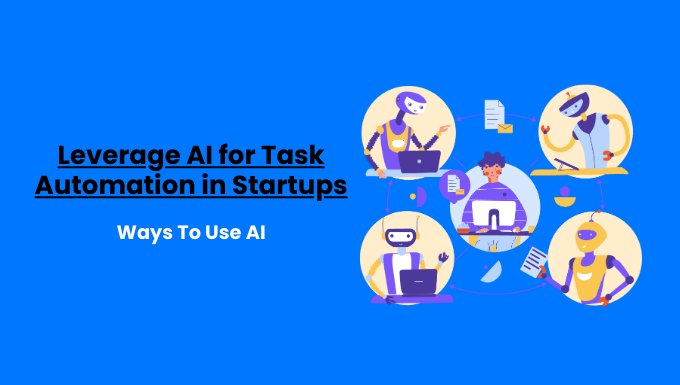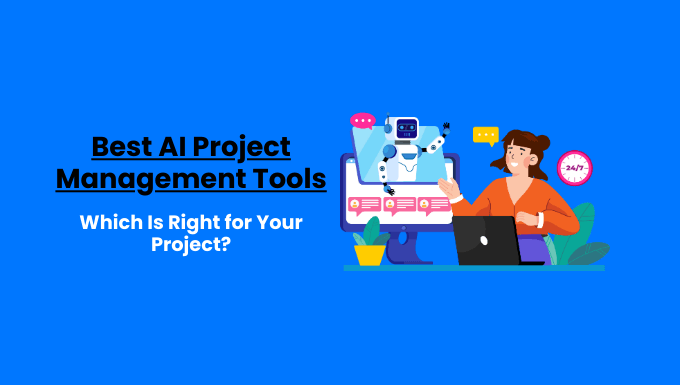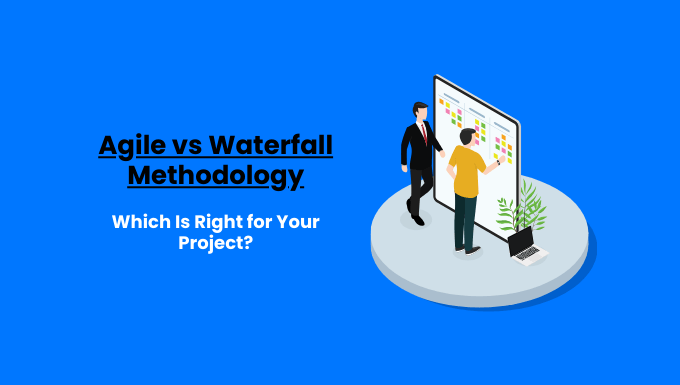Did you know mastering project management is crucial for a successful project, as 70% of projects fail without proper processes?
Whether you’re creating a project or refining a project plan, effective project management techniques are crucial
Let’s explore how to write a project plan in 10 steps for smooth project execution.
Key Takeaways:
- Define Clear Goals: Set specific objectives and scope to guide your project planning.
- Identify Stakeholders: Know who is involved and their roles in the project lifecycle.
- Develop a Detailed Plan: Outline tasks, schedules, and resources for effective project execution.
- Manage Risks Proactively: Identify potential issues early and plan to mitigate them.
- Utilize Management Tools: Leverage project management software for planning and monitoring.

Contents
ToggleUnderstanding the Project Management Processes or Phases
Before diving into the steps of creating a project management process, it’s crucial to understand the fundamental phases that form the backbone of any project.
These phases provide a structured approach to managing projects from inception to completion.
1. Initiation Phase
The initiation phase is where the project takes its first breath.
It’s all about defining the project’s purpose, determining its feasibility, and getting the green light to proceed.
Key activities in this phase include:
- Defining the Project: Establish the project’s purpose, goals, and overall scope. This is where you answer the “why” of your project.
- Stakeholder Identification: Identify all parties involved or affected by the project. This could include clients, team members, management, and even end-users.
- Project Charter Development: Create a document that officially starts the project and authorizes the use of resources.
Actionable Insight: When writing your project charter, use the SMART framework to define your project goals:
- Specific
- Measurable
- Achievable
- Relevant
- Time-bound
For example, instead of “Increase sales,” a SMART goal would be “Increase monthly sales by 15% within the next quarter through targeted marketing campaigns and improved customer retention strategies.”
2. Planning Phase
The planning phase is where you lay the groundwork for project success. It’s all about creating a roadmap that will guide your team through the project execution.
Key activities in this phase include:
- Setting Objectives and Scope: Define clear, measurable objectives and determine the project’s boundaries.
- Resource Allocation: Assign tasks, budget resources, and create a project schedule.
- Risk Management Planning: Identify potential risks and develop strategies to mitigate them.
- Communication Plan: Establish how information will be shared among stakeholders throughout the project.
Tool Tip: Utilize Gantt charts for effective scheduling. Tools like Microsoft Project or Asana offer robust Gantt chart features that can help visualize your project timeline and dependencies.
3. Execution Phase
This is where the rubber meets the road.
The execution phase involves putting your carefully crafted plan into action.
Key activities in this phase include:
- Task Implementation: Complete tasks and deliverables according to the project plan.
- Team Coordination: Manage team members and foster collaboration.
- Quality Assurance: Ensure the project meets the required standards and specifications.
Actionable Insight: Implement daily stand-up meetings to keep your team aligned and address any roadblocks quickly.
These short, focused meetings can significantly improve team coordination and project progress.
4. Monitoring and Controlling Phase
This phase runs concurrently with the execution phase and involves keeping a close eye on project performance and making necessary adjustments.
Key activities in this phase include:
- Performance Tracking: Measure project performance against the plan using Key Performance Indicators (KPIs) and milestones.
- Change Management: Handle changes in scope, timelines, or resources efficiently.
- Issue Resolution: Identify problems promptly and implement solutions.
Tool Tip: Use project management software like Jira or Trello to track tasks and issues in real-time. These tools offer customizable dashboards that can give you a bird’s-eye view of your project’s progress.
5. Closure Phase
The closure phase marks the end of the project.
It’s not just about delivering the final product but also about wrapping up all project activities and learning from the experience.
Key activities in this phase include:
- Project Evaluation: Review what was achieved and document lessons learned.
- Deliverables Handover: Transfer completed work to the client or stakeholders.
- Documentation and Reporting: Finalize all project documents and provide a comprehensive report.
- Celebrating Success: Acknowledge the team’s hard work and project completion.
Example: A post-project survey by PMI found that 70% of organizations that always use formal project closure processes report high project success rates, compared to only 41% of those that never or rarely use these processes.
Understanding these phases is crucial for creating an effective project management process.
In the next section, we’ll dive into the step-by-step guide on how to create a project management process tailored to your organization’s needs.
For more insights on project management methodologies, check out our article on project management methodologies.
Step-by-Step Guide: How To Create a Project Management Process
Now that we’ve covered the fundamental phases of project management, let’s dive into the 10 essential steps to create a robust project management process tailored to your organization’s unique needs.
Remember, while these steps provide a solid framework, the key to success lies in customizing the process to fit your specific projects and team dynamics.
As noted in our article on project management for startups, flexibility and adaptability are crucial, especially for growing businesses.
Step 1: Define Project Objectives and Scope
The foundation of any successful project lies in clearly defined objectives and a well-established scope.
This step is crucial for setting the direction and boundaries of your project.
Setting SMART Goals
Use the SMART framework to set clear, achievable objectives:
- Specific: Clearly define what needs to be accomplished.
- Measurable: Establish concrete criteria for measuring progress.
- Achievable: Ensure the goal is attainable given available resources.
- Relevant: Align the goal with broader business objectives.
- Time-bound: Set a clear timeline for achieving the goal.
Example of a SMART Goal: “Increase customer satisfaction scores by 15% within the next 6 months by implementing a new customer feedback system and providing staff training on customer service best practices.”
Determining the Project Scope
Clearly outline what is included in the project and, equally important, what is not. This helps prevent scope creep, a common issue that can derail projects.
Actionable Insight: Create a scope statement that includes:
- Project deliverables.
- Project boundaries.
- Constraints and assumptions.
- Acceptance criteria.
Tool Tip: Use a project scope template to ensure you cover all necessary aspects of your project scope.
Step 2: Identify Key Stakeholders
Stakeholders are individuals or groups who have an interest in or are affected by your project.
Proper stakeholder identification and management are crucial for project success.
Who Are Stakeholders?
- Internal stakeholders: Team members, management, and other departments.
- External stakeholders: Clients, end-users, suppliers, and investors.
Stakeholder Analysis
Conduct a thorough stakeholder analysis to understand their interests, influence, and potential impact on the project.
Step 3: Develop a Detailed Project Plan
A comprehensive project plan is your roadmap to success. It outlines how you’ll achieve your project objectives within the defined constraints.
Work Breakdown Structure (WBS)
Break down the project into smaller, manageable components. This helps in better task allocation and resource management.
Tutorial: Follow these steps to create a WBS:
- Start with the end deliverable.
- Break it down into major components.
- Continue breaking down until you reach individual tasks.
- Assign each task an identifier (e.g., 1.1, 1.2, 2.1).
Assigning Roles and Responsibilities
Use a RACI Matrix (Responsible, Accountable, Consulted, Informed) to clearly define team member roles.
Template: Here’s a basic RACI matrix:
| Task | Team Member 1 | Team Member 2 | Team Member 3 | Stakeholder |
| Task 1 | R | A | C | I |
| Task 2 | C | R | A | I |
R = Responsible, A = Accountable, C = Consulted, I = Informed
Scheduling and Budgeting
Create a timeline and allocate resources using tools like Gantt charts and budget spreadsheets.
Tool Tip: Consider using project management software like Asana or Trello for easier scheduling and task management.
Step 4: Implement Risk Management Strategies
Effective risk management can be the difference between project success and failure.
It involves identifying potential issues before they occur and having a plan to address them.
Risk Identification
Start by brainstorming potential risks with your team. Consider using techniques like:
- SWOT analysis (Strengths, Weaknesses, Opportunities, Threats).
- Historical review of similar projects.
- Expert interviews.
Example: Common risks in project management include:
- Scope creep.
- Budget overruns.
- Schedule delays.
- Resource constraints.
- Stakeholder conflicts.
Risk Assessment and Mitigation
Once risks are identified, assess their potential impact and likelihood.
For high-priority risks, develop mitigation strategies.
These could include:
- Avoidance: Changing the project plan to eliminate the risk.
- Mitigation: Reducing the impact or likelihood of the risk.
- Transfer: Shifting the risk to a third party (e.g., insurance).
- Acceptance: Acknowledging the risk and preparing for potential consequences.
Case Study: A software development company identified a high risk of schedule delay due to potential staff turnover. They mitigated this by cross-training team members and maintaining detailed documentation, which allowed them to complete the project on time despite losing two key team members midway.
Step 5: Establish a Communication Plan
Clear, consistent communication is vital for keeping all stakeholders informed and aligned throughout the project lifecycle.
Communication Channels
Choose appropriate channels based on the type of information and stakeholder preferences. Options include:
- Email for formal updates and documentation.
- Instant messaging for quick queries.
- Video conferencing for team meetings.
- Project management software for task-related communication.
Frequency and Protocols
Establish regular update schedules and communication protocols.
For example:
- Daily stand-up meetings for the core team.
- Weekly status reports for management.
- Monthly updates for external stakeholders.
Actionable Insight: Create a communication matrix that outlines:
- What information needs to be communicated?
- Who needs to receive it?
- When should it be communicated?
- How it will be delivered.
For more tips on effective team communication, especially in remote settings, check out our guide on how to manage and communicate with remote teams.
Step 6: Set Up Quality Control Measures
Ensuring project quality is crucial for meeting stakeholder expectations and delivering successful outcomes.
Defining Quality Standards
Establish clear criteria for what constitutes quality in your project deliverables.
This could include:
- Performance benchmarks.
- Compliance with industry standards.
- User satisfaction metrics.
Quality Assurance Activities
Implement ongoing quality checks throughout the project lifecycle:
- Regular code reviews in software projects.
- Prototype testing for product development.
- Peer reviews for content creation.
Step 7: Utilize Project Management Tools
Leveraging the right tools can significantly streamline your project management process, improving efficiency and collaboration.
Selecting the Right Tools
Choose tools that align with your project needs and team preferences.
Consider factors like:
- Project size and complexity.
- Team size and location (remote vs. on-site).
- Budget constraints.
- Integration capabilities with existing systems.
Tool Tip: Top features to look for in project management software:
- Task management and assignment.
- Time tracking.
- Gantt chart creation.
- File sharing and collaboration.
- Reporting and analytics.
- Mobile accessibility.
For a comprehensive list of project management tools tailored for startups, check out our article on project management tools for startups.
Integrating Tools into Your Process
Once you’ve selected your tools, ensure smooth adoption:
- Provide thorough training for all team members.
- Start with a pilot project to iron out any issues.
- Gather feedback and make necessary adjustments.
- Develop best practices and guidelines for tool usage.
Step 8: Execute the Project Plan
With all the preparation complete, it’s time to put your plan into action.
Team Coordination
Effective team management is crucial during the execution phase:
- Conduct regular team meetings to track progress and address issues.
- Encourage open communication and collaboration.
- Provide clear direction and support to team members.
Managing Resources
Stay on top of resource allocation:
- Monitor time and budget expenditures.
- Adjust resources as needed based on project progress.
- Be prepared to reallocate resources to address unexpected challenges.
Monitoring Progress
Keep a close eye on project advancement:
- Track key performance indicators (KPIs) regularly.
- Use project dashboards for real-time monitoring.
- Compare actual progress against the planned schedule.
Tool Tip: Set up custom dashboards in your project management software to track critical metrics at a glance. Tools like Jira and Microsoft Project offer robust dashboard capabilities.
Step 9: Monitor and Control the Project
Continuous monitoring and control are essential to keep your project on track and address any deviations promptly.
Performance Metrics
Key indicators to watch include:
- Schedule performance index (SPI).
- Cost performance index (CPI).
- Quality metrics (e.g., defect rate, customer satisfaction).
- Risk mitigation effectiveness.
Example: Earned Value Management (EVM) is a powerful technique for measuring project performance and progress in an objective manner.
It integrates scope, cost, and schedule measures to help project managers assess and forecast project performance.
Change Management
Be prepared to handle changes effectively:
- Establish a clear change request process.
- Assess the impact of proposed changes on project scope, timeline, and budget.
- Get appropriate approvals before implementing changes.
- Communicate changes to all relevant stakeholders.
Case Study: A construction project successfully managed a significant change when unexpected soil conditions were discovered.
By quickly assessing the impact, adjusting the timeline and budget, and communicating with stakeholders, they were able to adapt the project plan and still deliver the building on time.
Issue Resolution
Address problems promptly to minimize their impact:
- Encourage team members to report issues early.
- Prioritize issues based on their potential impact.
- Develop action plans for high-priority issues.
- Monitor the effectiveness of issue resolution.
Actionable Insight: Implement a “lessons learned” log throughout the project.
This ongoing documentation of challenges and solutions can be invaluable for future projects and continuous improvement.
Step 10: Close and Review the Project
Proper project closure ensures all loose ends are tied up and lessons are learned.
Project Closure Checklist
Ensure all aspects of the project are properly concluded.
Template: Project Closure Checklist:
- All deliverables completed and accepted.
- Documentation finalized.
- Resources released.
- Stakeholders notified.
- Final report submitted.
- Lessons learned session conducted.
- Project archives created.
Post-Project Evaluation
Conduct a thorough review to improve future projects.
Actionable Insight: Hold a retrospective meeting using the “Start, Stop, Continue” framework:
- Start: What should we begin doing?
- Stop: What practices should we cease?
- Continue: What worked well and should we keep doing?
Celebrating Success:
Recognize team achievements to boost morale and motivation.
Example: Host a project completion event, distribute personalized thank-you notes, or provide small tokens of appreciation.
By following these 10 steps, you’ll create a robust project management process tailored to your organization’s needs.
Remember, the key to success lies in consistent application and continuous improvement of your process.
This concludes the comprehensive guide on creating a project management process in 10 steps.
The article covers all the key aspects of project management, from initiation to closure, providing practical insights, actionable tips, and relevant examples throughout.
People Also Asked
1. What is the first step in creating a project management process?
The first step in creating a project management process is defining project objectives and scope. This involves setting SMART goals (Specific, Measurable, Achievable, Relevant, Time-bound) and clearly outlining what is and isn’t included in the project.
For example, a SMART goal might be to “Increase customer satisfaction scores by 15% within 6 months by implementing a new feedback system.”
2. Why is a communication plan important in project management?
A communication plan is crucial in project management because it ensures all stakeholders stay informed and aligned throughout the project lifecycle.
It helps prevent misunderstandings, reduces conflicts, and keeps the project on track. A good communication plan outlines what information needs to be shared, with whom, how often, and through which channels.
For instance, you might schedule daily stand-ups for the core team and weekly status reports for management.
3. What is the difference between project monitoring and controlling?
While closely related, project monitoring and controlling serve different purposes.
Monitoring involves tracking project progress and performance against the plan, such as checking if tasks are completed on time.
Controlling, on the other hand, involves taking corrective action based on monitoring results.
For example, if monitoring reveals a task is behind schedule, controlling might involve reallocating resources to get back on track.
4. How do I conduct a post-project evaluation?
To conduct a post-project evaluation:
- Schedule a meeting with key team members and stakeholders.
- Review project objectives and outcomes.
- Discuss what went well and areas for improvement.
- Analyze key performance indicators (KPIs) and compare them to initial targets.
- Gather feedback through surveys or interviews.
- Document lessons learned and recommendations for future projects.
- Create a detailed report summarizing findings and insights.
5. Can these steps be applied to Agile project management?
Yes, these steps can be adapted for Agile project management. While Agile emphasizes flexibility and iterative development, many of the core principles still apply.
For instance, defining objectives (Step 1) aligns with creating a product backlog in Agile. Risk management (Step 4) is equally important in Agile, though it’s addressed continuously throughout the project.
For more on Agile methodologies, check out our guide on “What Is Agile Methodology in Project Management?”.
6. How often should I update my project management process?
You should review and update your project management process regularly, ideally after each major project or at least annually.
This ensures your process stays relevant and effective. Look for areas where bottlenecks occurred, communication broke down, or unexpected challenges arose.
Use these insights to refine your process.
For example, if you notice recurring issues with resource allocation, you might need to adjust Step 3 (Develop a Detailed Project Plan) in your process.







